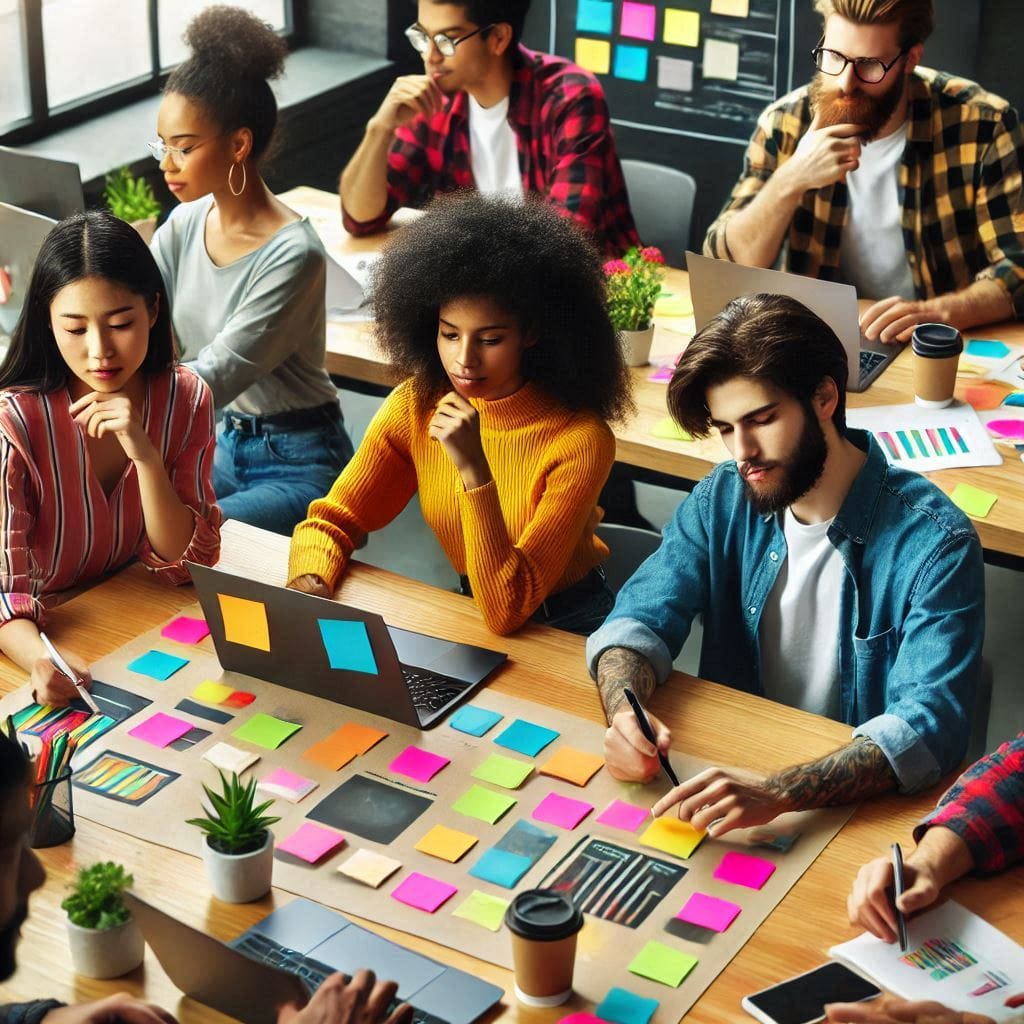Python vs Java [2024]: A Comprehensive Comparison
In the ever-evolving landscape of software development, choosing the right programming language is crucial. Two of the most popular and versatile languages that often come head-to-head are Java and Python. As we step into 2024, let’s dive deep into a comparison of these two powerhouse languages, exploring their strengths, weaknesses, and ideal use cases.
Introduction to Java and Python
Overview of Java
Java, developed by Sun Microsystems in 1995, is a versatile, object-oriented programming language known for its “write once, run anywhere” (WORA) principle. It’s a compiled language that runs on the Java Virtual Machine (JVM), making it platform-independent.
For more information about Java, visit the official Java website.
Introduction to Python
Python, created by Guido van Rossum and first released in 1991, is a high-level, interpreted programming language known for its simplicity and readability. It’s often praised for its elegant syntax and powerful libraries.
To learn more about Python, check out the official Python website.
Python vs Java: Key Differences
Syntax and Code Readability
One of the most significant differences between Python and Java is their syntax. Python is renowned for its clean, readable code that often requires fewer lines to accomplish the same task compared to Java.
Python code example:
def greet(name): print(f"Hello, {name}!") greet("World")Java code example:
public class Greeting { public static void greet(String name) { System.out.println("Hello, " + name + "!"); } public static void main(String[] args) { greet("World"); } }As you can see, Python’s syntax is more concise and closer to natural language, which often makes it easier for beginners to learn.
Compiled vs Interpreted
Java is a compiled language, which means the source code is compiled into machine code before it’s run. This compiled code can then be executed on any platform that has a Java Virtual Machine.
Python, on the other hand, is an interpreted language. The code is executed line by line at runtime, which can make it slower than compiled languages like Java but offers more flexibility and easier debugging.
Static vs Dynamic Typing
Java is statically typed, meaning variable types must be declared and are checked at compile-time. This can help catch errors early but requires more verbose code.
Python is dynamically typed, allowing variables to change types during runtime. This flexibility can speed up development but may lead to type-related errors that only surface during execution.
Performance: Java vs Python
When it comes to performance, Java is generally faster than Python, especially for computationally intensive tasks. This is primarily due to Java’s compiled nature and the optimizations performed by the JVM.
However, Python’s performance has improved significantly over the years, and for many applications, the difference may not be noticeable. Moreover, Python’s extensive libraries and frameworks can often compensate for its slower raw performance in specific domains.
Use Cases: When to Use Java or Python
Java: Ideal Applications
Java is widely used in:
- Enterprise-level applications
- Android app development
- Large-scale web applications
- Financial services applications
- Big data technologies (e.g., Hadoop)
Popular Applications of Python
Python excels in:
- Data science and machine learning
- Web development (with frameworks like Django and Flask)
- Scripting and automation
- Scientific computing
- Artificial Intelligence and Natural Language Processing
Learning Curve: Python vs Java
For beginners, Python is often considered easier to learn due to its simple syntax and focus on code readability. Its “batteries included” philosophy means it comes with a rich standard library, reducing the need for external dependencies when starting out.
Java, while more verbose, offers a structured approach to programming that can be beneficial for understanding fundamental concepts. Its strict typing system can help developers write more robust code but may present a steeper learning curve for newcomers.
Community and Ecosystem
Both Python and Java boast vast and active communities, which means plenty of resources, libraries, and frameworks for developers.
Python’s package manager, pip, and the Python Package Index (PyPI) make it easy to find and install third-party libraries. The language’s popularity in data science has led to powerful libraries like NumPy, Pandas, and TensorFlow.
Java’s ecosystem is equally robust, with tools like Maven and Gradle for dependency management, and a wide array of enterprise-level frameworks such as Spring and Hibernate.
Job Market and Career Prospects
Both Java and Python developers are in high demand. Java has long been a staple in enterprise environments, while Python’s popularity in emerging fields like data science and machine learning has seen a surge in job opportunities.
According to various job market analyses, Java developers often command slightly higher salaries, but Python developers are seeing rapid growth in job postings, especially in data-related roles.
Features of Python that Give it an Edge
While both languages have their strengths, Python boasts several features that give it an edge in certain scenarios:
- Simplicity and Readability: Python’s clean syntax makes it easier to write and maintain code.
- Rapid Development: Python’s simplicity and extensive libraries allow for faster development cycles.
- Versatility: Python is used in web development, data science, AI, automation, and more.
- Strong Community: Python has a large, active community that contributes to its growth and provides support.
- Data Science and Machine Learning: Python is the go-to language for these rapidly growing fields.
When Java Shines
Despite Python’s rising popularity, Java still holds several advantages:
- Performance: Java’s compiled nature makes it faster for computationally intensive tasks.
- Enterprise-Level Applications: Java’s robustness and security features make it ideal for large-scale enterprise applications.
- Mobile Development: Java is the primary language for Android app development.
- Legacy System Integration: Many existing systems are built in Java, making it crucial for integration projects.
- Multithreading: Java’s built-in support for multithreading makes it excellent for concurrent applications.
The Role of Solution Architects in Choosing Between Java and Python
When it comes to large-scale software projects, the choice between Java and Python (or any other programming language) is often made by solution architects. These professionals consider various factors such as project requirements, team expertise, scalability needs, and long-term maintenance when deciding on the technology stack.
To learn more about the critical role of solution architects in software development, check out our article on Who is a Solution Architect and What is Their Role?
The Importance of Software Houses in Java and Python Development
Whether you choose Java or Python for your project, working with a reputable software house can significantly impact the success of your development efforts. Software houses bring together teams of experienced developers, solution architects, and project managers who can guide you in making the best technology choices and ensure efficient implementation.
For more information on what a software house is and how it can benefit your project, read our article on What is a Software House?
Future Trends: Java and Python in 2024 and Beyond
As we look towards the future, both Java and Python continue to evolve and adapt to changing technological landscapes.
Java’s Future
Java remains committed to backward compatibility while introducing new features. Some trends to watch:
- Improved performance with Project Valhalla
- Enhanced concurrency with Project Loom
- Continued focus on cloud-native development
- Advancements in JVM technology
Python’s Future
Python’s growth shows no signs of slowing down. Future trends include:
- Continued dominance in data science and machine learning
- Improvements in Python’s speed with projects like Pyston
- Enhanced support for asynchronous programming
- Growing adoption in web development, especially with frameworks like FastAPI
Conclusion: Choosing Between Python and Java
The choice between Python and Java ultimately depends on your specific needs, project requirements, and personal or team preferences. Both languages have their strengths and are capable of handling a wide range of tasks.
Consider Python if:
- You’re new to programming and want an easier learning curve
- You’re working on data science, AI, or machine learning projects
- Rapid development and prototyping are priorities
- You need a language that excels in scripting and automation
Choose Java if:
- You’re developing large-scale enterprise applications
- Performance is a critical factor
- You’re building Android mobile applications
- You need robust multithreading capabilities
Remember, many developers find value in learning both languages, as they complement each other well and cover a vast range of programming needs. In 2024 and beyond, both Java and Python will continue to be powerful tools in any developer’s toolkit.
Whichever language you choose, the key is to dive in, start coding, and never stop learning. The world of programming is vast and ever-changing, and both Java and Python offer exciting opportunities for growth and innovation.












